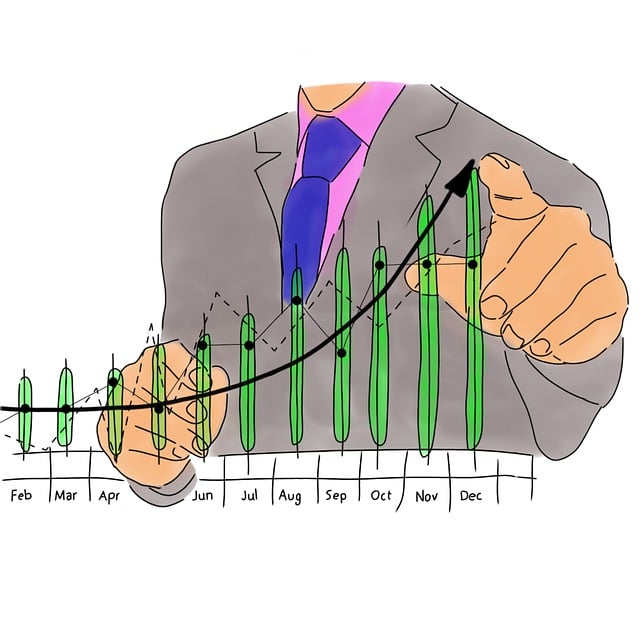Stop loss orders are vital risk management tools for traders, automatically selling assets at set prices to limit losses. Effective placement and regular review, including adjusting stops based on market changes, protect capital in volatile periods. Common mistakes include setting stops too close to entry or neglecting adjustments, leading to unexpected triggers. Advanced methods like trailing stops and percentage-based orders enhance adaptability and profitability. In real trading, appropriate stop losses protect investments and enable disciplined navigation through market uncertainties.
“Unleash your trading potential with a strategic understanding of stop loss orders. This comprehensive guide navigates the fundamentals, offering insights into mastering this crucial risk management tool. From deciphering the basics to advanced techniques, we explore effective strategies for setting and adjusting stop losses. Learn how to avoid common pitfalls and discover real-world examples that demonstrate successful execution. Optimize your trades with our expert advice on stop loss placement for enhanced profitability.”
- Understanding Stop Loss Orders: Basics Explained
- Setting Effective Stop Loss Levels for Traders
- Strategies to Time and Adjust Your Stop Losses
- Managing Risk with Stop Loss: Common Pitfalls Avoided
- Advanced Techniques for Optimal Stop Loss Placement
- Real-World Examples of Successful Stop Loss Execution
Understanding Stop Loss Orders: Basics Explained

Stop Loss orders are a fundamental risk management tool for traders, designed to limit potential losses on an open position. When placing a trade, a Stop Loss order allows investors to specify a price at which they wish to sell their holdings if the market moves against them. This simple yet powerful mechanism provides a safety net, ensuring that even in unfavorable market conditions, the trader’s potential downside is limited.
The basic concept is straightforward: you set a specific price level, known as the stop price, and when the asset’s price reaches or falls below this level, the order automatically triggers a sale. This immediate action prevents further losses, as the trade is closed at the predefined stop price, helping traders maintain discipline and control over their portfolio during volatile market periods.
Setting Effective Stop Loss Levels for Traders

Setting effective stop loss levels is a fundamental skill for traders, allowing them to manage risk and protect their capital. A stop loss order automatically triggers a sale when a stock reaches a predetermined price, limiting potential losses. Traders should consider several factors when setting their stop loss levels. First, it’s crucial to assess the volatility of the asset. Highly volatile stocks may require tighter stop losses to avoid unnecessary losses due to rapid price swings. Additionally, understanding one’s risk tolerance and investment goals is essential. Aggressive traders seeking quick gains might set more aggressive stop losses, while conservative traders prioritizing capital preservation would opt for wider stops.
It’s also beneficial to compare stop loss levels with support and resistance levels identified through technical analysis. Aligning stops with significant price levels can help traders avoid false signals and ensure the order is executed at a logical price. Regularly reviewing and adjusting stop losses as the market evolves is a good practice, especially in dynamic markets where prices can quickly change. Traders should be prepared to move or close their stop-loss orders as needed to adapt to shifting market conditions.
Strategies to Time and Adjust Your Stop Losses

Timing and adjusting your stop losses is a crucial aspect of effective risk management for traders. A common strategy is to place stop losses at key price levels, such as support or resistance zones, or based on technical indicators like moving averages or RSI. Traders often set initial stop losses when entering a trade, aiming to limit potential downside risk. However, market dynamics can change swiftly, so regular review and adjustment are essential.
As prices fluctuate, traders should monitor their positions and reconsider stop loss placements. Moving stop losses towards a more favorable position as the trade unfolds can help protect profits or minimize losses. This dynamic approach requires discipline and a keen understanding of market behavior. By timely adjusting stop losses, traders can navigate volatile conditions, ensuring that their risk management strategy remains adaptable and responsive to market shifts.
Managing Risk with Stop Loss: Common Pitfalls Avoided

Many traders underestimate the power of a simple yet effective tool—the stop loss order. This fundamental concept is a risk management strategy that protects against significant losses. When used appropriately, stop losses can ensure traders don’t get caught in declining markets with substantial open positions.
However, there are common pitfalls to avoid. Traders often set their stops too close to the entry price, leaving them exposed to quick market movements. Others forget to adjust their stops as the market evolves, leading to unexpected triggers. By understanding and implementing stop losses effectively, traders can safeguard their capital, manage risk, and make more calculated decisions in volatile markets.
Advanced Techniques for Optimal Stop Loss Placement

In the realm of trading, mastering stop loss placement is a game-changer. Advanced techniques go beyond the basic order types and involve tactical adjustments to time and price triggers. One such strategy is using trailing stops, where the stop loss adjusts as the trade moves in your favor, ensuring you lock in profits without missing out on potential gains. This dynamic approach allows traders to navigate volatile markets with finesse.
Another sophisticated method is the implementation of percentage-based stop losses, which sets the trigger at a certain percentage gain or loss from the entry price. This flexible strategy adapts to varying market conditions and risk appetites. By combining these advanced techniques with careful analysis, traders can optimize their stop loss placement, fostering a more dynamic and profitable trading experience in today’s digital era.
Real-World Examples of Successful Stop Loss Execution

In real-world trading scenarios, a well-executed stop loss can make all the difference between maximizing profits and enduring significant losses. Consider a stock trader who has identified a promising growth opportunity in a tech startup. They decide to invest $10,000 with a stop loss set at $9,000. Despite initial market volatility, the stock price surges, reaching $12,000 within a week. At this point, the trader’s stop loss is triggered, automatically selling their shares for $10,000 and locking in a substantial gain of 20%. This strategic use of stop losses prevents the trader from missing out on significant growth while also protecting against potential downturns.
Another example involves a forex trader who enters a short position on the Euro against the US Dollar, anticipating a currency devaluation. They set a stop loss at a 3% loss threshold, which is triggered when the exchange rate moves against them by that margin. This proactive measure ensures the trader’s potential losses remain capped, allowing them to walk away with minimal damage if their prediction proves incorrect. Such practical applications highlight how stop losses serve as a safety net, enabling traders to navigate market uncertainties with greater confidence and discipline.
Stop loss orders are an indispensable tool in a trader’s arsenal, enabling them to manage risk effectively and protect their investments. By understanding the fundamentals outlined in this article—from setting initial levels to advanced placement techniques—traders can enhance their strategies and navigate markets with greater confidence. Remember, mastering stop loss is crucial for navigating the unpredictable, ensuring your trades remain disciplined, and ultimately, achieving long-term success in any trading endeavor.
